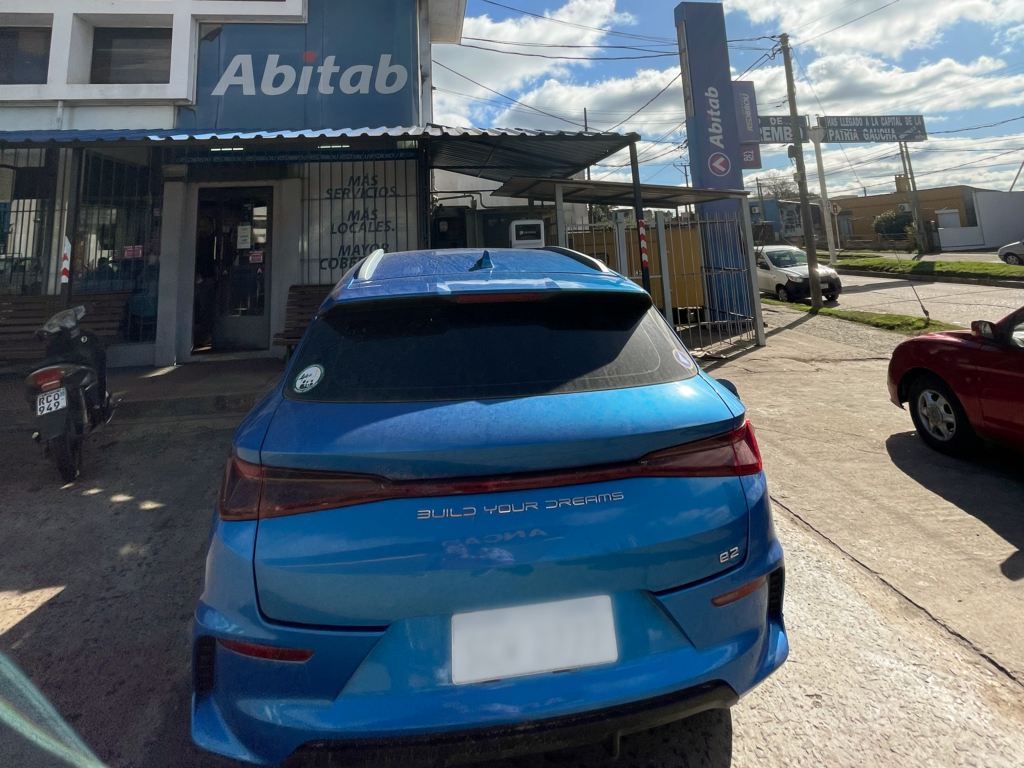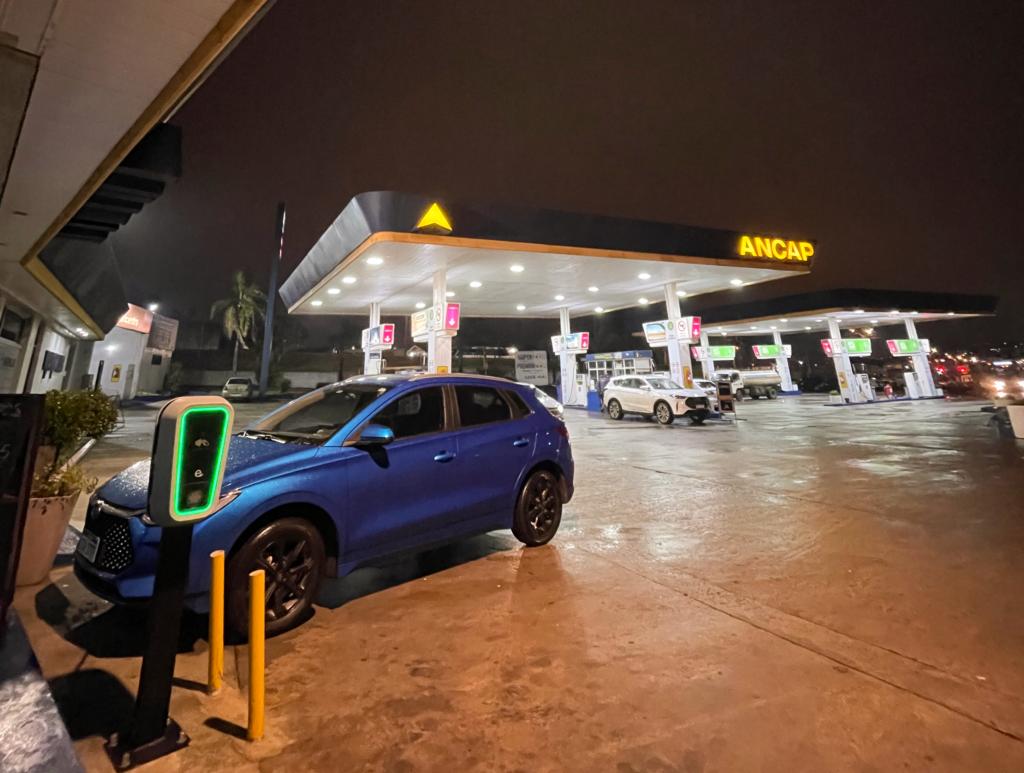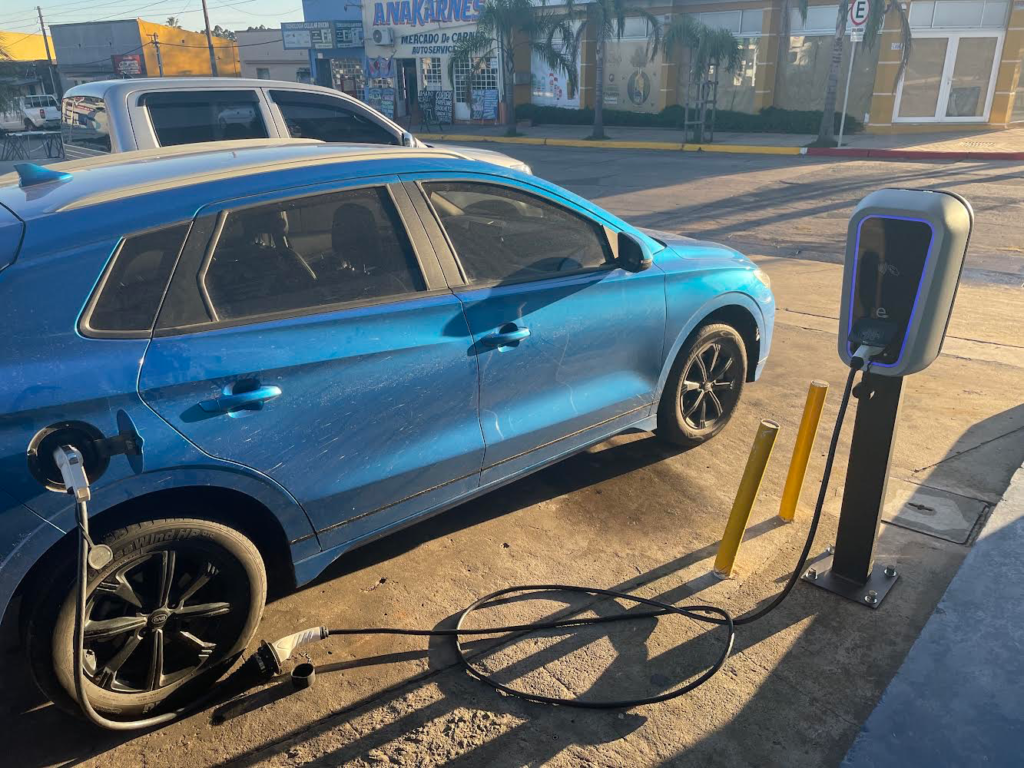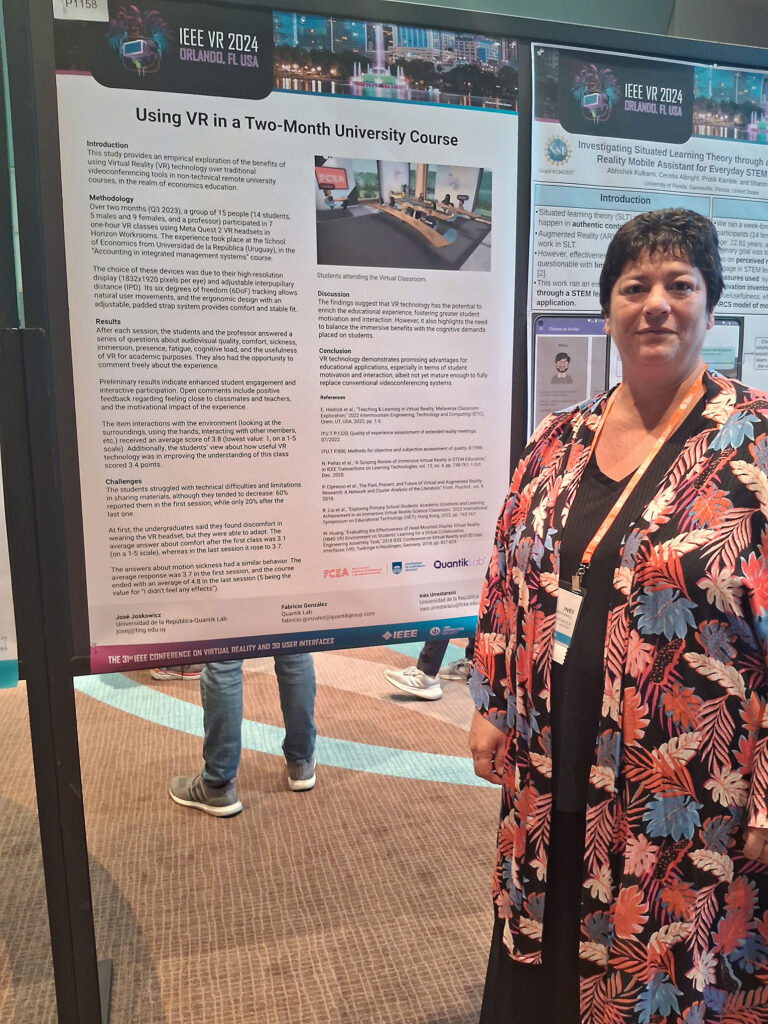Talk of electric mobility may appear in the imagination as a few vehicles plotted to the extreme with green leaves and signs shouting loudly that they are 100% electric on the streets. But it is much more than that.
We are still going through a period of transition to electric mobility, in which mistrust and fear abound (with or without reason). Little by little, it is becoming clear that electricity in mobility is here to stay.
As Quantik Lab has been investigating, everything indicates that sooner or later we will have a large number of electric vehicles on our streets. In fact, the consulting firm BCG forecasts that by 2035 more than half of global vehicle sales will be electric.
But are the fears of potential buyers real, and is it possible to drive an electric vehicle in Uruguay? To answer these questions, I decided to embark on an adventure through Uruguay in adverse conditions, to understand if this is possible, in a trip of a few days and more than 1000 kilometers.

The crossing
The only preparation for our trip was to load the vehicle 100% ready to go. I was accompanied by my wife and children, plus everyone's belongings.
The route? We left from Montevideo to the city of Rivera, 500 km away, and then we returned to the starting point, so it was about 1000 km in total.
We took the trip in a BYD electric vehicle, model E2, which is supposed to have a range of 400 kilometers. First surprise: the theoretical framework, in certain scenarios, is only representative and tested by reality.
Another detail to take into account was the conditions of the trip, which were extreme for Uruguay: it was in July, in the middle of winter, with temperatures bordering zero degrees, wind and rain. To add some difficulty, we had the car loaded to the maximum, both with passengers and luggage.
Regarding vehicle charging, we proposed that the only way was to use the public or private posts available along the route. We did not carry an emergency charger, which allowed us to see first hand if a trip of this magnitude is possible and what real obstacles may arise.
What obstacles do we encounter?
With everything ready, we set off for Durazno. The ride went smoothly, but we discovered that the theoretical 400 km performance was quickly consumed. Driving at regulation speed, we arrived at our destination with only 20% of battery, well below the factory's specifications.
When using the charging point at the Durazno gas station, we were faced with the first inconvenience. A couple of gasoline-powered vehicles were occupying the charging bays, which completely hindered the process. After a conversation with the management of the service station and a 30-minute wait, they moved the vehicles and we were able to charge the car for 4 hours at 7 kwh (slow charge), to continue the next day with the next trip.
The next stop was Tacuarembó, 200 km from Durazno, and we met an electric vehicle on the road. What may seem nice turned into fear: if the vehicle were to charge at the only charger within the 100 km radius we intended to use, we would be forced to wait for its charging time and then our own, which would have complicated our trip. Fortunately, the car was diverted.
We finally arrived in Rivera, but with just enough, because unfortunately the steep slopes of the route in the north of our country made the engine work harder than expected, which reduced the load a lot. It didn't help either that the Tranqueras charger was out of service, so, at 40 km per hour and with beacons on (for going on a national route at this speed), we traveled for 20 minutes until we reached our destination, remembering that, by going at a lower speed, the engine consumes less electricity and its performance is maximized.
On the way back, a technical problem with the cable forced us to take a detour in search of a cable charger. For this reason, we returned via Flores, Trinidad; the trip was extended a little more, and we tested the last stretch to Montevideo.
Almost arriving at our destination, we had a very hostile stretch: low temperatures, rain and wind, which caused the engine to strain to the maximum. But our savior arrived: a fast charger (the only one in Montevideo for now compatible with BYD) gave us the autonomy to arrive in 15 minutes; otherwise, we would have been left on the road.

What we got out of the trip
It was a very interesting journey. Below, I would like to go through some of the lessons learned along the way.
The risk of a single nearby charger
In Uruguay, there are points where there is only one charger, even in several kilometers around. In particular, arriving at Tacuarembó we detected this risk seeing another electric car sharing the road. And this is not because the charger may be broken, but because, as there are more cars on the roads, this problem will become more common.
Therefore, the infrastructure will have to grow to prevent us from being stranded or having to modify plans drastically.
Maintenance and compatibility of chargers
On the way back, a fast charger saved our lives, but on the way out we found another one in Tranqueras (30 km from Rivera) that was not operational. If this device had worked, we would have arrived at our destination more comfortably and with less nerves.
This lack of maintenance could be a big problem for someone without the proper knowledge: for example, they could continue at constant speed, without slowing down, and run out of battery before the destination.
It is also important to make sure that the adapters or cables are 100% compatible with all chargers in your country. This should be the case, but experience has shown otherwise.
Although we had a minor inconvenience (with the connector's plastic safety lock), we ran the risk of being stranded in Rivera.
Topography, climate and weight of the vehicle
The steep slopes when arriving at Rivera were critical for battery consumption, and it was something we did not foresee. In addition, battery regeneration in this context is not sufficient.
Let's keep in mind that regenerative braking generates electrical energy from the kinetic energy produced when the vehicle brakes or slows down. This is a feature present in almost all electric cars.
Going up the slope, we consumed about 22 kW, while on the descent we regenerated 14 kW. Undoubtedly, we were in a vicious circle that was going to extinguish the battery.
Regarding the weather, although it may seem surprising, the initial range of the vehicle can be reduced by up to 45% if adverse conditions are added, as happened to us on our return trip. Cold, wind, rain and the car fully loaded made the 400 km of autonomy become a little more than 210 km. This made us arrive at our destination with little margin and forced us to charge again to arrive with more peace of mind.

In summary, we can say that Uruguay's roads are not yet prepared for long trips with electric cars. Although in theory they can be done, in practice there are too many risks; in our experience, although we had obstacles, we were also quite lucky. We were even on the verge of requesting a tow truck for assistance, but in the end we did not succeed.
Even if you are recovering the battery little by little, if your vehicle charges at 7 kW on the slow chargers, long stretches are slow to recover. If, on the other hand, you have a 22 kW or 40 kW charge, the experience is very similar to refueling at a gas station. Going down to the bathroom and getting a coffee, in 15 to 30 minutes, can give you the necessary percentage to continue a few more kilometers, instead of staying for hours to complete 200 km.
This trip, in addition to leaving us many lessons, shows us that Uruguay is in transition towards electric mobility. It also proves that, even when planning a long trip, unexpected situations (such as the scarce availability of charging in the north of the country) can alter the plans in a few minutes.
In addition to a lot of autonomy, you need a charging infrastructure with appropriate development and maintenance to overcome these unforeseen events. Although it is growing by leaps and bounds every year, to travel several kilometers with your electric vehicle, apart from planning, you will need luck to be on your side.
By Fabricio González, Head of Quantik Lab ( Quantik's idea incubator).
Fabricio has a background in Systems Engineering and Business Administration (refresher course at the University of Salamanca) and a Product Management certification from the Pragmatic Institute (USA). He has been involved in consulting and software development for projects related to various industries for more than 20 years.



